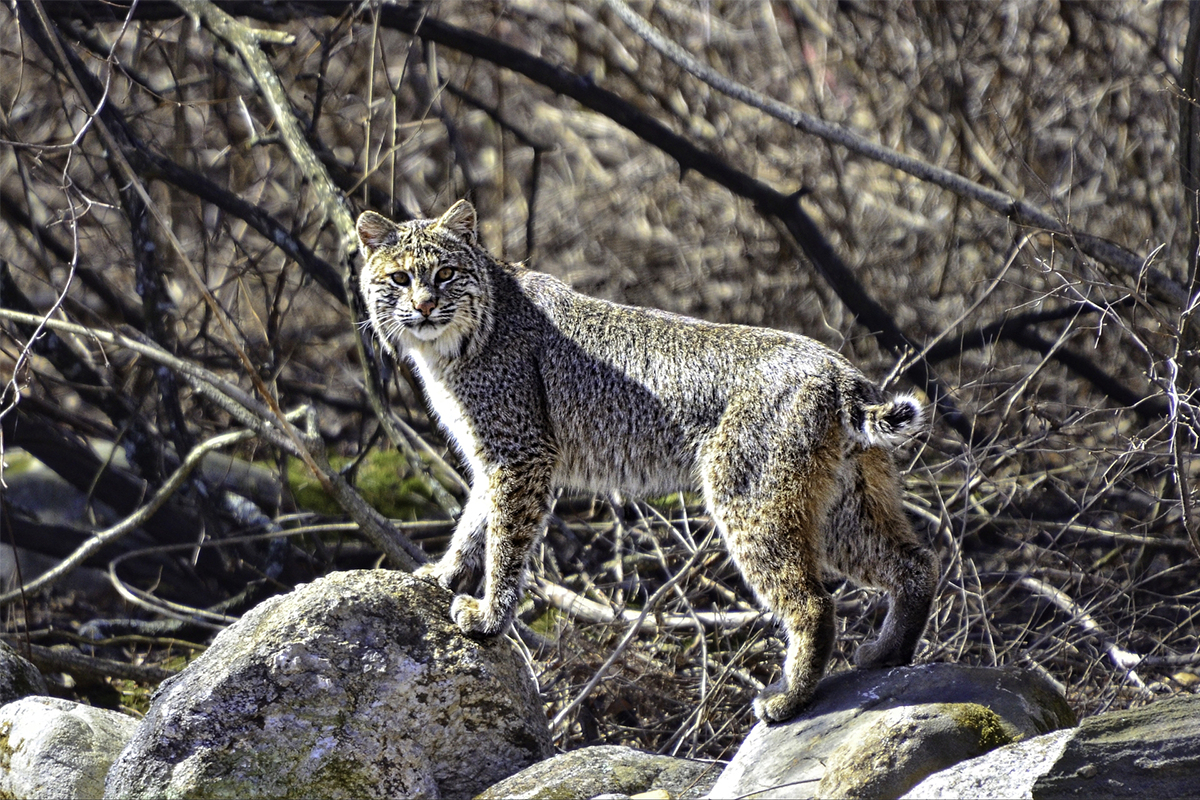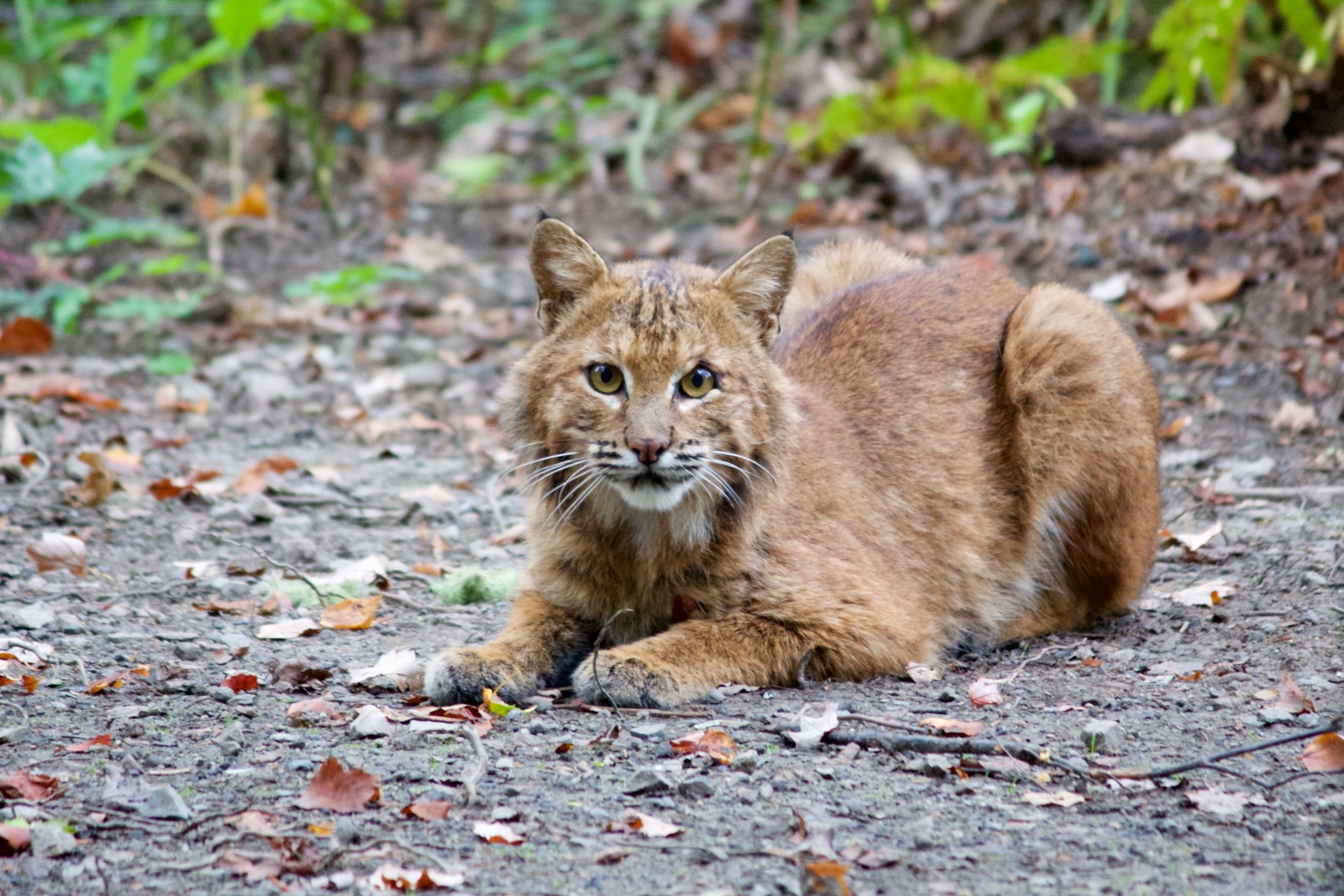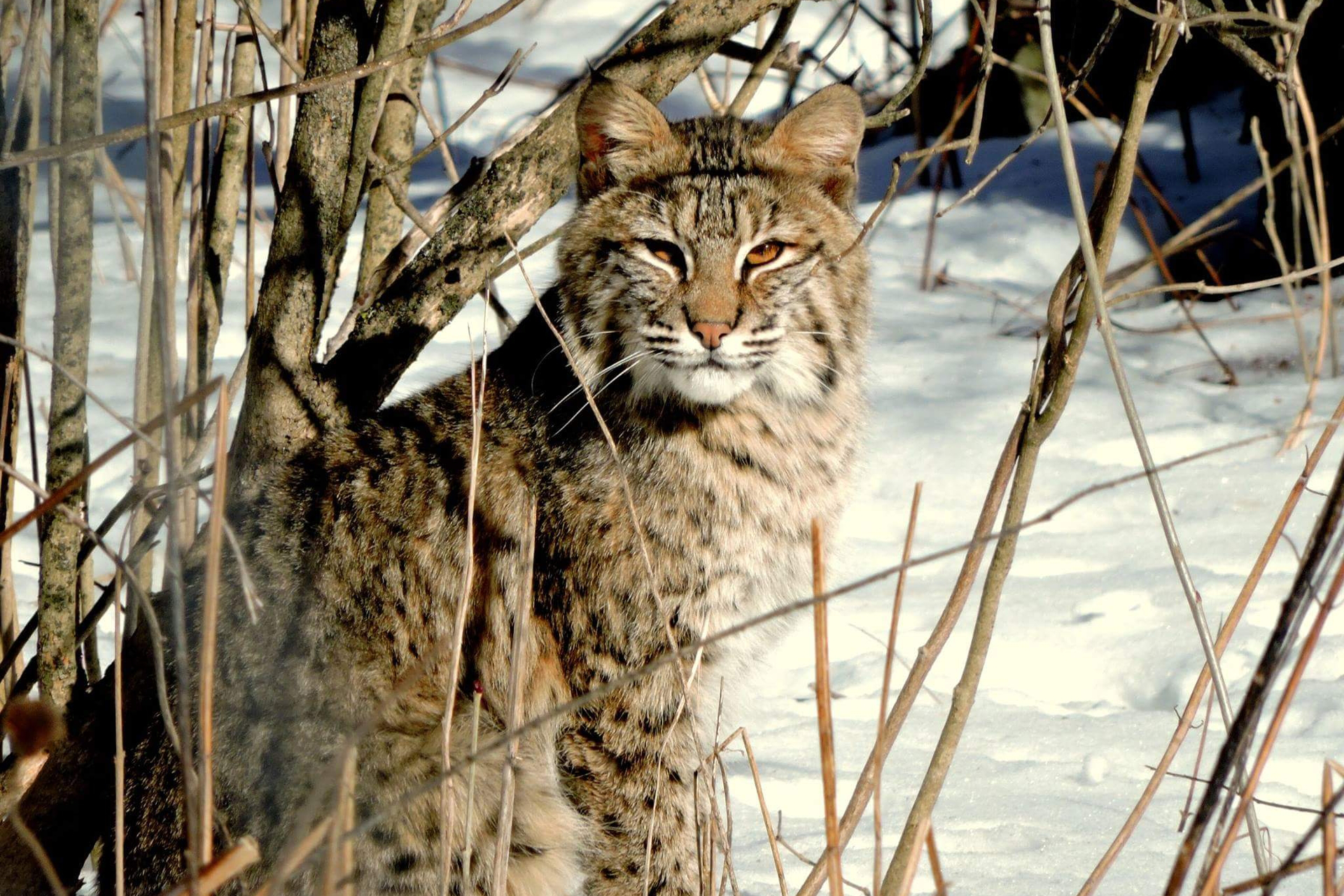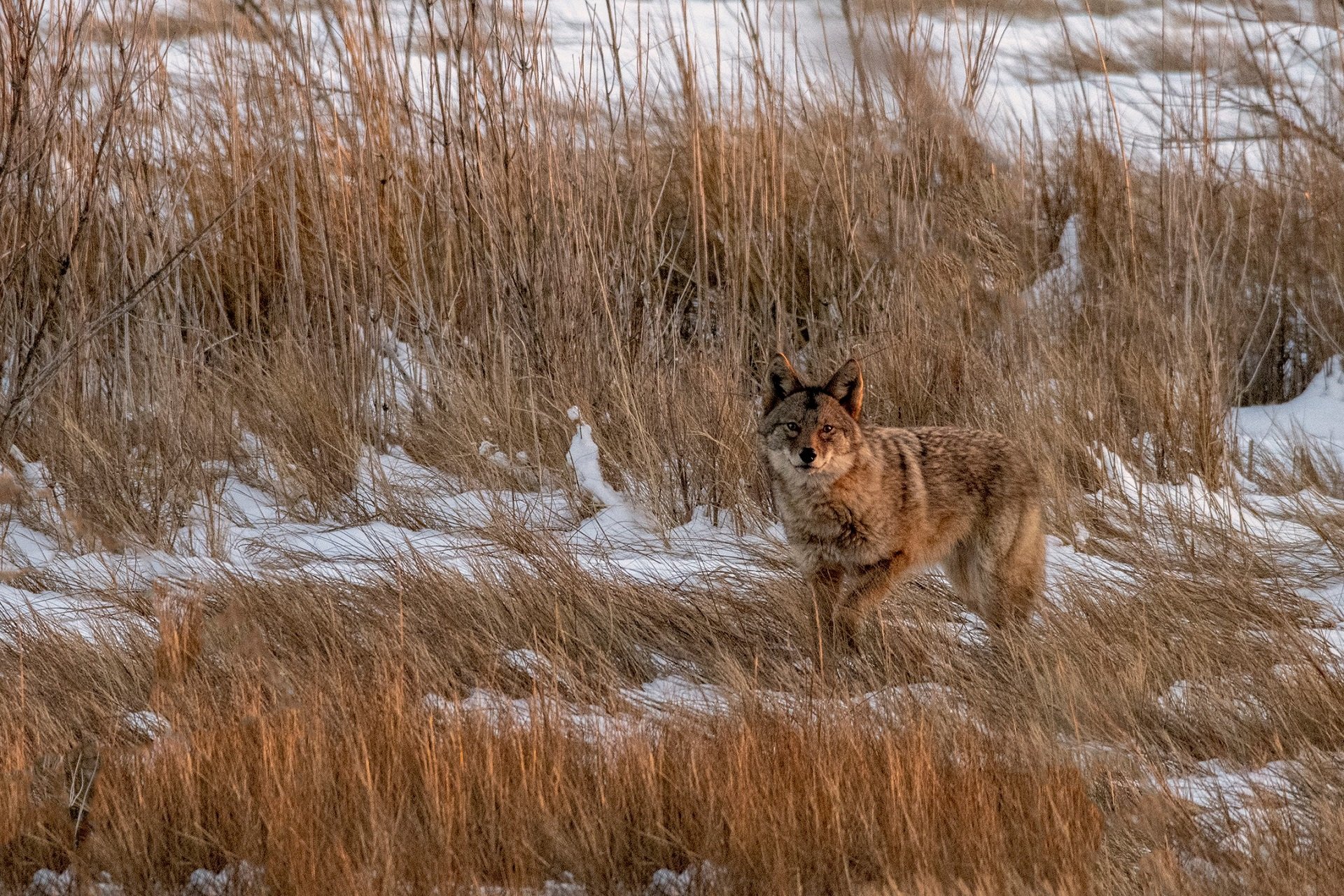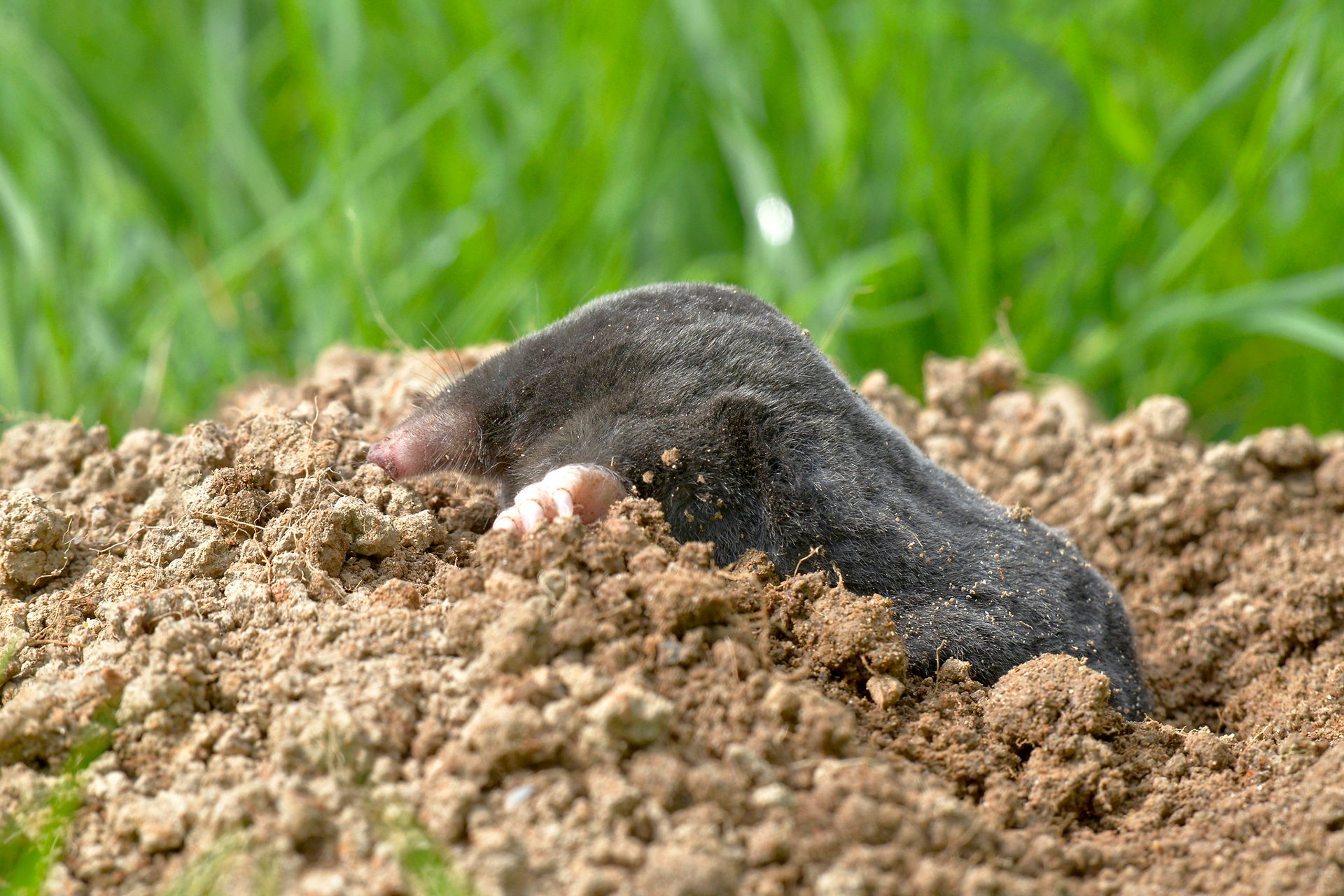Mammals in Massachusetts
Bobcats
The bobcat (lynx rufus) is the only species of wild cat now found in Massachusetts. The bobcat got its name from its short tail, which is used for balance when climbing trees and navigating difficult terrain. Bobcats are both crepuscular (active at dawn and dusk) and nocturnal (active during the night), however, they sometimes will have periods of activity during the day. Bobcats are shy animals with an innate fear of humans and will not attack a person unless provoked, cornered, or habituated in some way.
How to Identify Bobcats
Twice the size of a house cat, an adult bobcat can measure from 28 to 47 inches long and weigh between 15 to 35 pounds, the male being larger than the female. They have a short tail (3.5 to 8 inches), a facial ruff, and slightly tufted ears. They are variable in color with indistinct spots.
Like housecats, bobcats have retractable claws, so their tracks won’t have any claw marks. They look like a typical domestic cat track, only slightly larger.
Bobcat Behavior
What do Bobcats Eat?
Their preferred food is medium-sized mammals such as rabbits, but they are opportunists and ground hunters, so will eat many other creatures including birds, rodents, insects, fish, and even some plants. Larger prey such as deer are likely to be killed only when injured or otherwise vulnerable. When food is plentiful, they will store it by covering it with dirt and leaves.
When Do Bobcats Breed?
Breeding occurs between February and March, and the kittens are born 62 days later. Bobcats are polygamous, meaning they have more than one mate, and there is no ongoing bond between the male and female.
A litter consists of one to four young, which are blind and helpless at birth and have a thick coat of spotted fur. Their eyes open at about ten days and begin taking solid food at around 30 days. They are weaned at 60 to 70 days and usually remain with the female until their first fall or winter.
Birth dens are in caves, under ledges, in hollow logs, or other protected locations, and are lined with dried vegetation. The male is not involved in the raising of the young.
Where Can You Find Bobcats
Populations vary across the state, with the highest density in central and western Massachusetts. They are rare in the southeast. They cover large territories and may travel as much as four miles in a single day. Both male and females mark their territories with scent. They are well adapted to various environments, including backyards and residential neighborhoods.
Are Bobcats Dangerous?
Bobcats are shy animals with an innate fear of humans and will not attack a person unless provoked, cornered, or habituated in some way, but attacks are extremely rare. If you do come across one, do not attempt to approach it, especially if it is with its young. While bobcats are not a threat to people, they are known to kill small livestock such as chickens and ducks or unsupervised small pets. To avoid this, always keep an eye on small pets and make sure to have chickens and ducks secured in an enclosed pen.
Threats Facing Bobcats
Bobcats are threatened by climate change and human impacts on their habitat. Without healthy, un-fragmented forests or brushy areas, bobcat populations could decrease. Other threats are diseases like rabies, which is invariably fatal to animals.
How Mass Audubon Helps Bobcats
Mass Audubon is helping bobcats by protecting their habitats, building resilient landscapes, and creating a safe ecosystem where they can thrive. You can help us conserve and protect bobcats by becoming a member today.
Stay Connected
Don't miss a beat on all the ways you can get outdoors, celebrate nature, and get involved.




